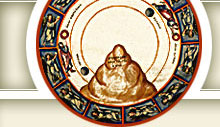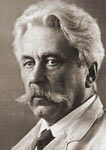Vladimir Beneshevich and his Works on the Manuscripts from Sinai
The outstanding scholar of Byzantine history Vladimir Beneshevich was described by
The last fifteen years of his life were associated with the our Library. In 1924, Beneshevich was invited by the Library's directorate to set up a photo lab. This room was used mainly to copy miniatures and handwritings from manuscripts, and in particular, to recover a washed text in palimpsests (manuscripts on parchment that has been washed and used again). Now the photo lab has developed into the Copy Service Department. In December 1925
Beneshevich regarded the creation of a comprehensive research catalogue as the main purpose of his study of Greek manuscripts. He worked for the Manuscripts Department from December 1925 to November 1928 (before the time of his first arrest and exile), and between November 1934 and October 1937. He was again arrested in November 1937 and shot on 27 January 1938. In the six years at the Library V.N. Beneshevich made rough descriptions of all Greek collections. They have survived in six folders of various size, the last one contains of an extensive typescript preface to the catalogue (Greek 893), written in 1937.
V.N. Beneshevich was not allowed to finish his catalogue. While far from complete, his material proved to be useful to the staff and users of the Manuscripts Department.
At the turn of the 20th century the Imperial Academy of Sciences decided to publish the catalogue of Greek manuscripts from St Catherine's Monastery on Mt Sinai. The immense catalogue was started but not completed by Bishop Porphyrius (Uspensky). Beneshevich was commissioned to complete and edit it. For this purpose V.N. Beneshevich made three visits to Mt Sinai: in 1907, 1908 and 1911. The first volume of the catalogue was issued in 1911. It contained, in addition to description of the manuscripts in St Catherine's Monastery, a list of manuscripts from Sinai held by our Library and other European institutions, including single codices and fragments. Each fragment was properly assigned to its original Sinai manuscripts. 68 manuscripts from Sinai were possessed only by our Library. The task demanded that the editor had an infallible photographic memory (in addition to photographs made personally by him).
In 1930s, V.N. Beneshevich was actually the sole paleographer - Hellenist. But he did not let this profession die. His pupil, Evgenya Eduardovna Granstrem, not only continued his life's work but also established a research school.
Beneshevich's Most Important Works, Related to Sinai:
- The Account of the Trip to the Sinai Monastery of St. Catherine in Summer 1908. Bulletin of the Imperial Academy of Sciences /Izvestiia Imp. Akademii nauk/. 1908. Pp. 1145-1148.
- A Fragment of the Greek Liturgy in Latin Transcription: On the History of Mt Sinai Monastery. Bulletin of the Imperial Academy of Sciences /Izvestiia Imp. Akademii nauk/. 1910. Pp. 1233-1244.
- The Account of the Trip Abroad in Summer 1911. Bulletin of the Imperial Academy of Sciences /Izvestiia Imp. Akademii nauk/. 1911. Pp. 1097-1104.
- A Description of Greek Manuscripts in St Catherine's Monastery on Mt Sinai Vol. 1: Remarkable Manuscripts in the Library of Mt Sinai Monastery and Mt Sinai House in Cairo Djuvania, Described by Archimandrite Porphyrius Uspensky. Published by the Imperial Academy of Sciences with money bequeathed to it by Bishop Porphyrius, under the editorship and with additions of V.N. Beneshevich. Saint Petersburg, 1911.
- Archeological and Paleographical Monuments of Mt Sinai. Iss. 1. Leningrad, 1925; Iss. 2. Saint Petersburg, 1912.
I. N. Lebedeva,
Senior Research Scientist
of the Old Russian Manuscripts Section


